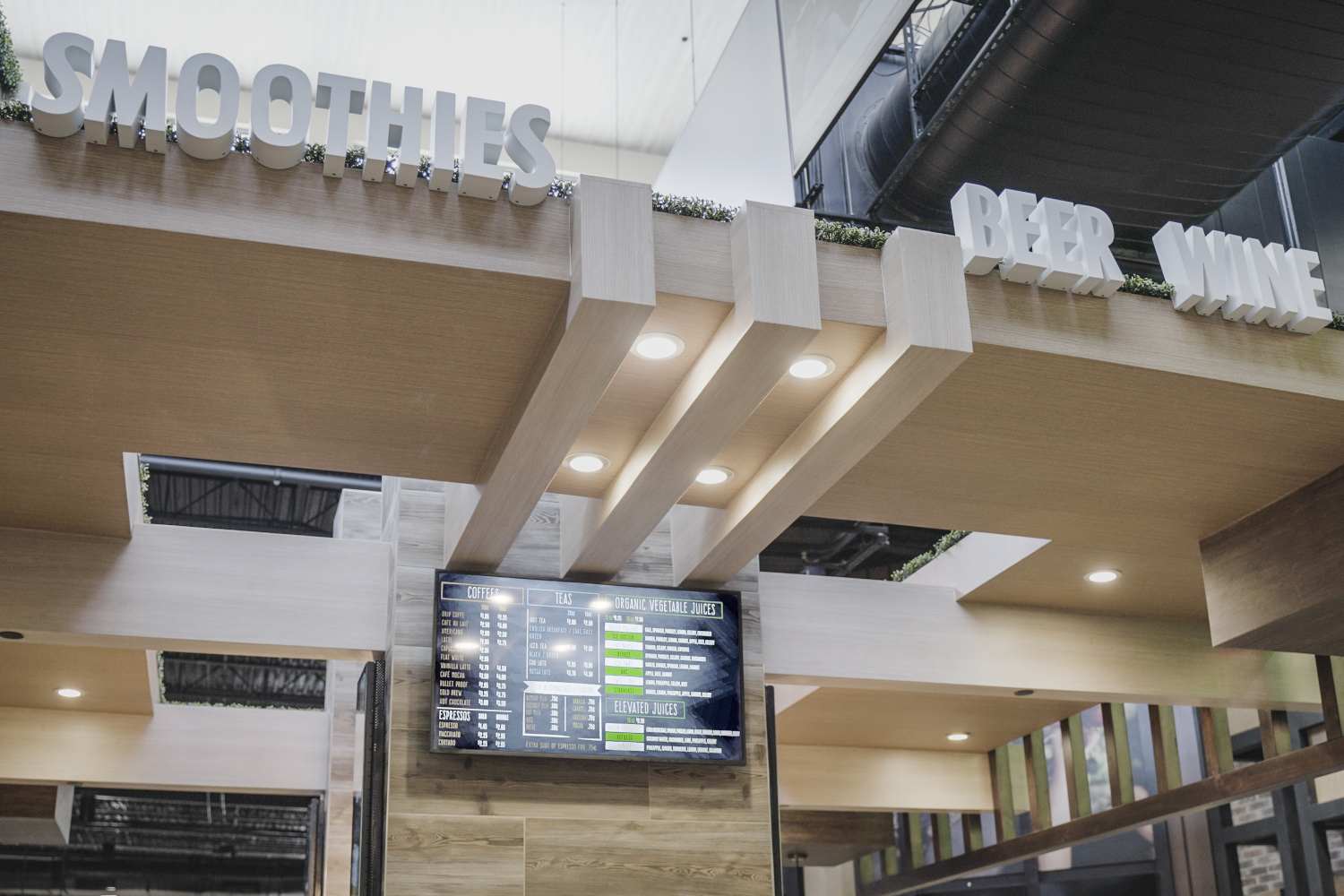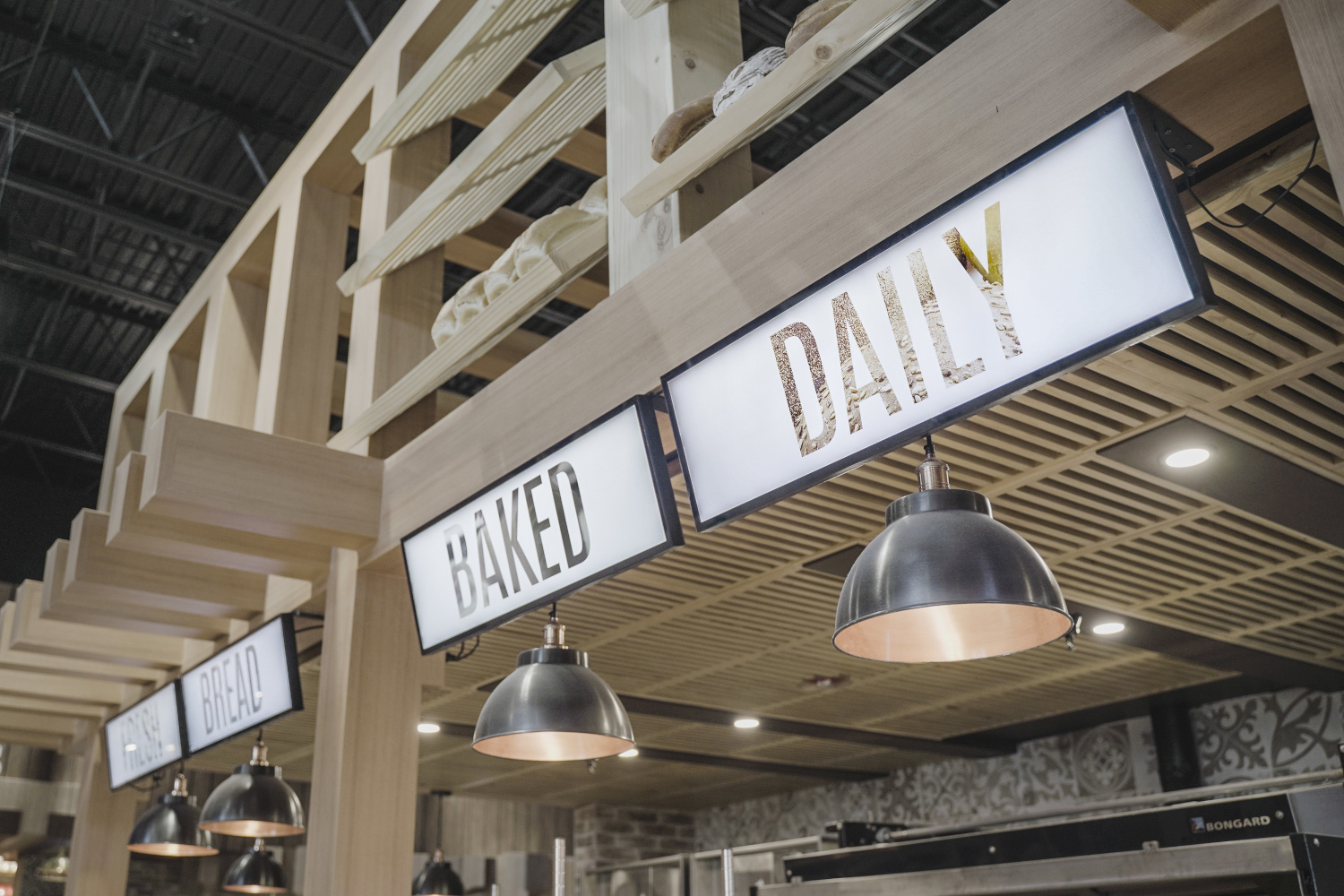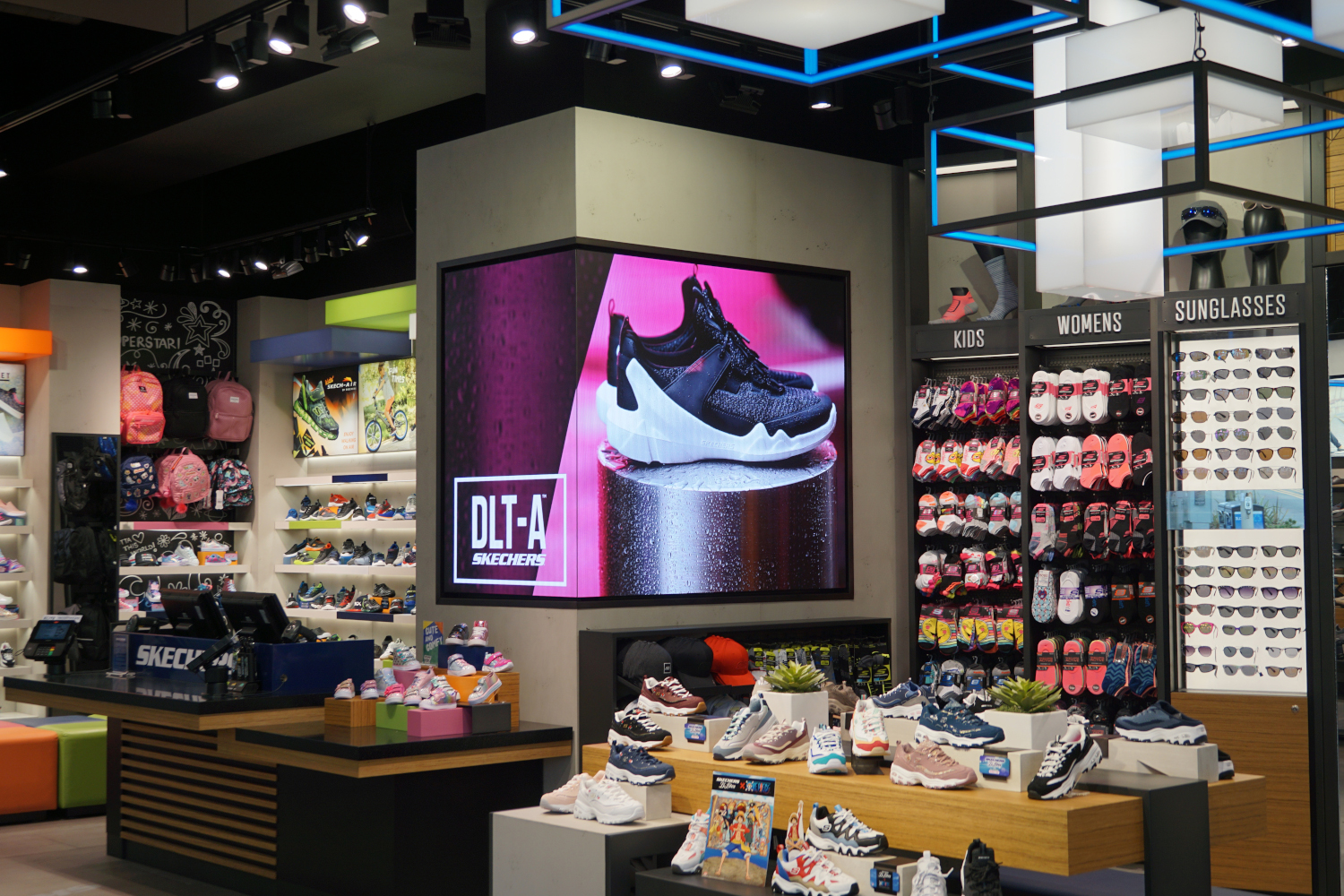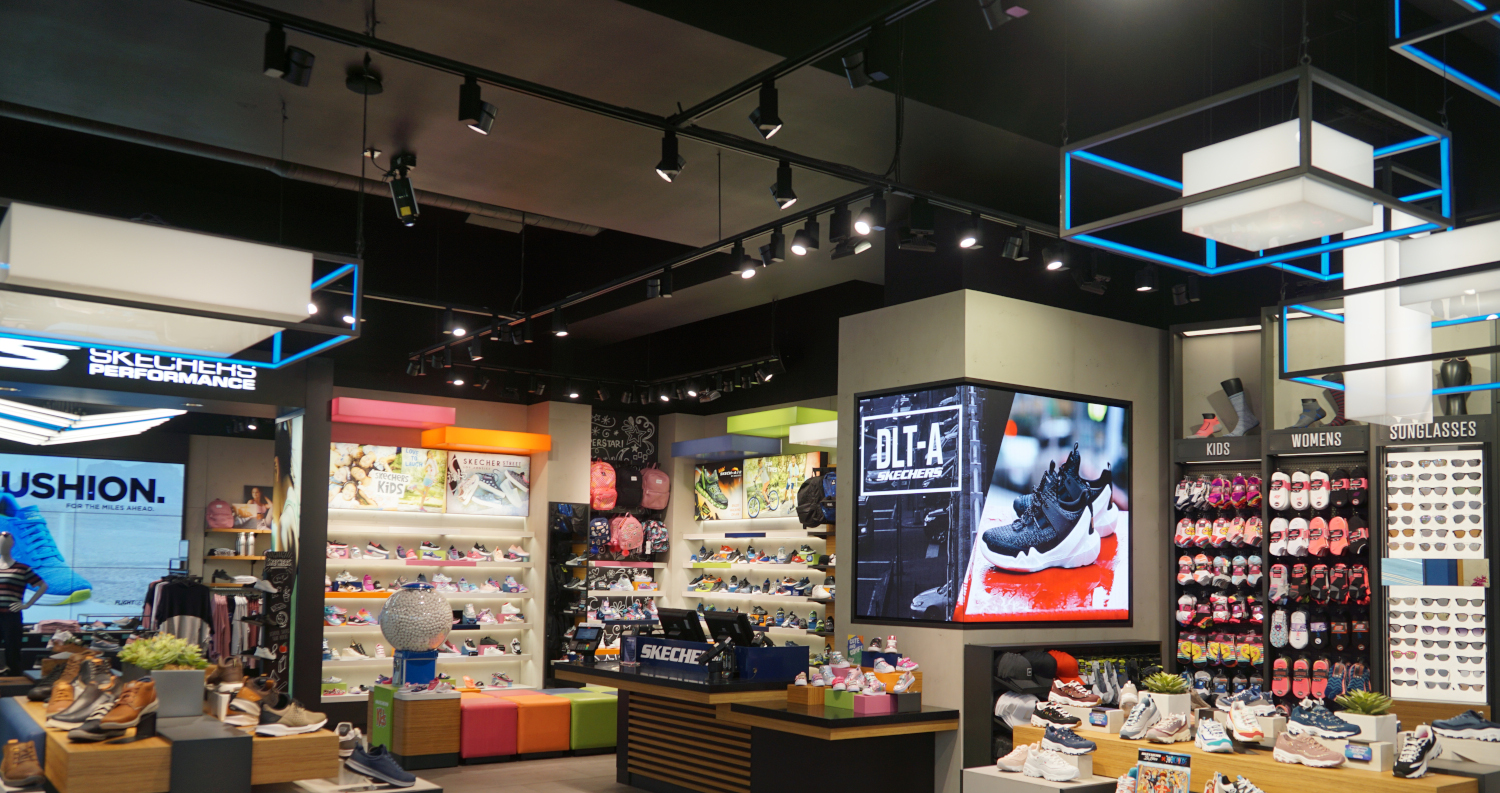New and emerging opportunities for AV to add comfort to the consumer experience.
The carnage caused by the novel coronavirus (COVID-19) has ravaged virtually every vertical market in the commercial AV universe—from education, to sports, to corporate—but perhaps no sector has felt its wrath to as great an extent as retail has. Stores and shops had already been bearing the burden of online competition for more than a decade, with an estimated 1.3 million retail employees having been pink-slipped in the decade since the Great Recession. And that was before the arrival of the pandemic, which closed up more than 47,000 stores across the country in just 10 days in March of this year, a Bloomberg analysis shows. Resultantly, retail sales in the US fell 16.4 percent, which is by far the largest decline in the nearly three decades the government has tracked the data. It’s speculated that 15,000 of those retailers might never reopen.
[Editor’s Note: On a more positive note, CNBC reported on June 16 that retail sales rose 17.7 percent in May, topping economists’ forecasted eight-percent rise.]
But, as with the tornados and other weather disasters that tend to propagate around the same time of year, the COVID-19 outbreak is being viewed by some as not only undeniably tragic, but also an opportunity to renovate and rebuild the retail market sector. After all, many would say that, even before the pandemic arrived, retail hadn’t yet found its footing in the digital era. Just as the record business had to have Napster wreck its old infrastructure before more elegant solutions, such as Spotify, could show it a more efficient path, retail might emerge from a very long, very rough ride better prepared for the decades ahead. And, as with music, AV technology is going along for that ride. In fact, our industry might even light the way.

Into The Unknown
“No one knows what’s going to happen,” Brian Edwards, CEO of Edwards Technologies, observed honestly. “In fact, no one even knows what we don’t know.” Edwards Technologies is a designer of interactive AV systems that have been installed in retail locations that include Vans retail stores and skateparks, the Disney Store, Universal Studios theme park stores, the LEGO Store and M&M’s World in Las Vegas NV. According to Edwards, AV has become a bigger force in retail environments during the last decade, with high-end sound systems and eye-catching videowalls proliferating. However, the technology has been mostly superficial—a slick sheen of “entertainment” atop an industry that, otherwise, has been basically unchanged since R.H. Macy, Richard Sears and Alvah Roebuck, John Nordstrom, Joseph Bloomingdale and a handful of other department-store entrepreneurs set up shop a century or so ago.
“With the way AV technology [was] applied in retail stores, it became another source of noise; it was more like wallpaper,” Edwards lamented. “There wasn’t any integration with the core operations of the store. It wasn’t meeting its potential. That’s what has to happen in the future: AV has to be treated as a layer in a much bigger technology picture in retail. This was going to happen anyway; the virus has just shortened the window in which it’ll take place.”
Colby Harder is President of Vancouver, British Columbia, Canada-based AV integrator CONTI and design consultancy Forte Technical Designers. He, too, envisions a significantly enhanced role for AV in retail during, and in the wake of, COVID-19. “No one knows what retail is going to look like on the other side of this,” he admitted. “But what we do know is that retailers are going to have to convey messaging around how they’re planning to make shoppers feel safe, and AV will have a big part to play in that.”
Harder enumerated a number of potential applications directly or indirectly related to the pandemic; for example, the use of cameras that can scan shoppers for a high temperature (a technology, he acknowledged, that’s not always reliable but that can help reassure shoppers). Cameras could also heat track customers throughout a store to offer insights into traffic patterns, which the pandemic might have influenced. Shoppers might avoid certain types of aisles or displays, for instance, if they attract multiple customers simultaneously and, thus, would diminish social distancing.
“These can be an important source of data as to how to reconfigure stores to make sure traffic is flowing efficiently, and [to keep] shoppers moving the same direction,” Harder explained. He added that store audio systems can be adapted, as well, inserting reminders to shoppers to maintain a proper distance. This advice might be more comforting if it’s couched within background music.
Video—in particular, digital signage—is going to become more ubiquitous, with screens in some new locations (e.g., bathrooms) to offer hygiene advice and in others (e.g., outside dressing rooms) to inform shoppers about how to handle merchandise, such as tried-on clothing. “Staff are going to get questions about that 300 times a day,” Harder predicted. “Video will free them from that and let them focus on other tasks.” It will also likely increase demand for smaller-size screens, reversing the trend of the last two decades in retail.
But don’t be confused: Big screens still have their place. A recent CONTI project saw large, narrow-pixel-pitch NanoLumens LED walls installed on the walls and the ceiling for Herschel Supply Co., a Canadian outdoors chain. They’re used to create an immersive area, known as the Infinity Cube; a Bose audio system hidden in planters delivers a bucolic avian soundtrack. Before the pandemic, its content was intended to transport shoppers to the environment in which they’d use the store’s backpacks and tents. “Now, that same kind of AV infrastructure can be used to make shoppers feel safe and secure in that environment,” Harder observed.
Taking a broad view, Harder detailed what he called “a meshed workplace”: Just as the pandemic has blurred the lines between workplace and home for millions of people, who, for months, have avoided their regular offices, consumers have become even more reliant on online shopping. Therefore, brick-and-mortar stores might morph into something more like showcases, where consumers can experience a product, after which they do their actual shopping from their phone and laptop. (It’s similar to how pop-ups act for retail now.) In those showcase environments, staffers might be able to interface with shoppers from their own home, telepresencing themselves through kiosks equipped with screens, speakers, cameras and microphones. That minimizes (or eliminates) the number of associates who have to be onsite.
“The whole point behind this is to make shoppers and employees feel comfortable enough to come out,” Harder said. “There’s going to be a lot of trial and error involved with this, and it’ll take a couple of years to figure out. But, ultimately, stores are going to have to make their brands [synonymous] with safety and convey that the store cares about that. AV is going to help them do it.”

New Uses For Big Screens
Before the pandemic, large-scale LED walls in department stores and malls went from novelty to almost ho-hum in a matter of a few years. However, in the age of COVID-19, those same displays might serve a larger and much more significant function. “Before, you might have had a large videowall used a few times a year for special events, but, otherwise, it was just there as wallpaper for advertising and messaging,” according to James Roehrl, Mall Niche Sales Segment Specialist for Daktronics, which not only manufactures and assembles but also installs and integrates its own audiovisual systems. “Today, we just don’t know what retail is going to look like once it all opens up again. But I can see [LED walls] being used for much more immersive types of uses, such as the backdrops for concerts on mall stages. [Those] can attract more people to malls, but they also would help keep the number of people on a stage down.” He continued, “I think they’re also going to serve as sponsorship tools. When events like that are done, the LED walls can display logos and messages the same way that it’s done in sports venues: ‘Replay brought to you by….’”
According to Roehrl, touchscreens for wayfinding have grown in popularity in recent years; these days, though, touching anything is a “touchy” subject. He said gesture technologies, such as those used by Microsoft’s Kinect game console, as well as Quick Response (QR) codes, which would put the maps onto the customer’s phone, are being considered. However, that kind of synergy of technologies will change the nature of how video is integrated. “It moves us closer to the IT side and to content design and development, and it engages consumers more deeply because of the connection to their mobile devices,” he observed. “The technology of LED, QR and mapping is pretty easy, but at what point [are content management systems and] data brought into the picture, and who handles that? It begins to change the nature of what we do.”
Although retail environments’ investment in AV technology slowed abruptly as the pandemic took hold, Roehrl remains confident that LED will continue to grow in popularity and ubiquity, as lower prices and brighter diodes make it attractive for all types of content. He pointed to an installation at Sketchers’ flagship store in Manhattan Beach CA. There, a pair of 5’x3′ LED walls meeting at an outward 90-degree corner put the products displayed on them in sharp relief. Tight, 1.9mm line spacing provides crisp, clear image-viewing distances as close as five feet from the display face. Indeed, pixel pitches are clearly continuing to narrow. As evidence, Roehrl cited the 2.5mm pitches on LEDs at locations of the Disney Store; meanwhile, Apple Store locations have reportedly gone even tighter.
“The trend for LED in retail is getting the pitch tighter so the display can be smaller and lower—closer to eye level—[thus making] it more intimate,” Roehrl explained. “Once, LED was all about very big—and it still is—but, now, it’s also about getting up close and personal.”

Thermal Imaging
Retail was an important vertical market for AV manufacturers before the pandemic, but, in its aftermath, it could become an even more important one. Brick-and-mortar shops were already using their in-store video-display infrastructure so as better to position themselves to compete with online shopping. They’d been using video content to complement physical shopping’s ultimate advantage: tactile engagement—the ability to create an immersive in-store environment for shoppers. In the age of COVID-19, those same display systems can become the backbone of the sales strategy and safety regimen that will keep shoppers engaged and secure.
In May, Samsung began to roll out a package of options, provided by the company and various partners, to add thermal-imaging capabilities to already-installed displays. These sensors and related software can be configured to operate directly with individual shoppers or to scan crowds, looking for fever hotspots. Parrish Chapman, Director of Sales, B2B Retail, US Market, for Samsung’s display division, said this application can be scaled to any size enterprise, and it can use any of Samsung’s displays—from 13-inch screens to large videowalls. What’s more, it’s integrated with Samsung’s Systemon-Chip (SoC) technology, developed for its digital-signage media players.
“With that,” Chapman continued, “we can automate the entire process to check temperatures at the door, as well as manage store capacity and direct shoppers to use different aisles. [That] takes the workload off of store workers.”
In addition, in January, Samsung extended an existing partnership with Cisco WebEx. The Samsung Flip 2 allows sales specialists in stores to interact via video with customers. Chapman cited an example of an online beauty consultation that results in a transaction when, later on, the customer stops by the store to pick up the products used. “And we can extend this to a locker in front, so they never even have to enter the store,” Chapman said. That kind of customer-at-the-curb interaction has recently seen 37-percent growth, he added.

Farm To Table
LCD displays—in par ticular, 4K screens—are still useful currency in retail, especially when there are a lot of them. A 76,000-square-foot, farm-to-table-style food market in Naples FL opened last December with roughly 100 digital displays of various sizes and configurations; they’re there to communicate the owner’s drive for fresh and healthy food, as well as to communicate what’s available daily. Samsung screens, installed by Naples-based integrator and content developer Instore Screen, are positioned at order counters, in aisles, in the dining area, and at welcome and decision points around the store. These, the business’ owner said, represent the future of grocery retailing.
A key, according to Instore Screen’s CEO, Henrik Andersson, was to make the screen technology look like it belonged there. Screens were built into fixtures, and custom screen types (e.g., stretched and square LCDs) were mixed with dozens of conventional, 4K-ready Samsung QBR Series digital menu displays. One 32-foot-long aisle has several rows of horizontal, ribbon-like displays in front of shelves, highlighting products and prices as well as running a stylized animation of a tractor. “[Because they use] those odd-sized screens, they don’t appear like the store is just full of TVs,” Andersson observed. “It has a really nice mix of screens that are replacing regular printed posters, but it doesn’t feel like advertising. We’re trying to create a feeling in the store.”
Projection is also finding applications in retail. John Moezzi, National Account Manager at NEC, pointed to a chain of big-box stores that had been in the process of installing NEC’s laser projectors from ceiling mounts. These are aimed at the floor and they act as visual beacons for shoppers to use specific doorways as checkout exits, part of the store’s security program.
“But, with the pandemic,” Moezzi began, “this kind of projection technology has even more applications. Projectors allow for messaging to be projected on store floors that can communicate a wide range of information—from messages about staying six feet apart to promotional sales messages. The projectors are connected to media players on a network, so the messaging can be changed quickly, remotely and in all locations to keep it current.” He continued, “And, for health instructions, projection is better than the floor stickers now being widely used, [as they] can peel off and become scuffed. Plus, [if you use] laser projectors, they can be installed in the ceiling grid because you don’t have to access them for maintenance. This is a kind of technology that works for retail whether we’re in a pandemic or not, and it’s cost effective. The [return on investment] on two projectors per store was less than 12 months.”
Retail Remains Core
Retail is facing an array of challenges. These include technological challenges and online challenges like those posed by Amazon and its ilk. Now, retail faces biological challenges, too. However, retail is also at the core of the US economy. Consumer spending is about 70 percent of the country’s annual economic growth, and retail sales compose fully half of that. Without a healthy retail sector, it would take far, far longer to recover from the pandemic-induced recession currently upon us. AV technology will be a part of retail’s rebound.
In fact, according to Brian Edwards, AV integrators should expect to be part of a larger media solution for their retail clients. In many ways, that’s already happening, as integrators take on more IT-centric missions and work more closely with both IT providers and creative-content developers. In addition, as more of the “infotainment” aspect of retail messaging shifts to personal wireless devices, AV integrators should focus on how AV can help store management facilitate employee communications. But at least for the rest of the year, AV and everything else will have one primary mission above all others: safety.
“Audio and video are going to have to be used to make customers, as well as employees, feel safe and secure—[not] entertained—in the store environment,” Edwards declared. “The shopping experience has moved more toward an enhanced technology experience. A lot of that is going to take place on mobile devices, so [traditional] AV has to find its new place in the mix of technology inside stores.”
For more features from Sound & Communications, click here.